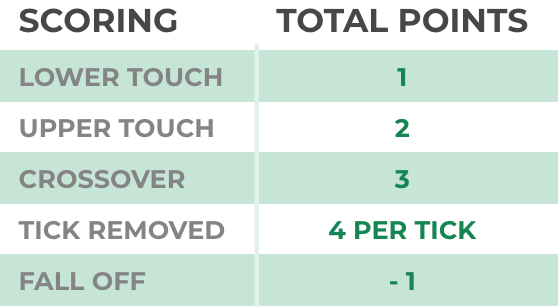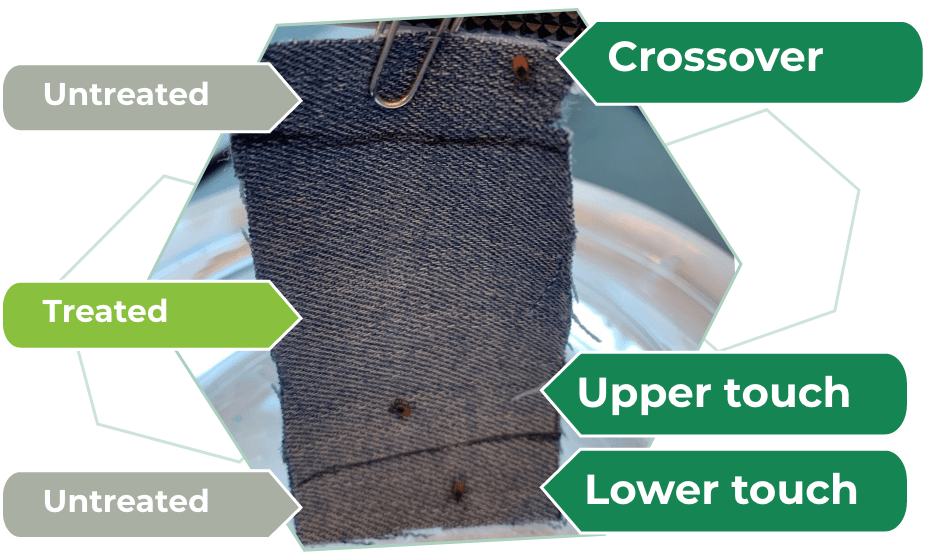
The more the ticks would touch and walk onto the treated areas of the vertical test strips, the higher the score.

This species of tick undergoes what scientist call ‘questing’ behavior.
The tick crawls up to the ends of the blades of grass where they are detecting CO2, heat and pheromones from us or our animals.
This is a very important behavior to consider when testing any repellent on ticks.
Ticks such as such as the Brown dog tick (Rhipicephalus sanguineus) do not show questing, yet this is the tick species commonly used to test tick repellents sold on the market.
We used two materials, Whatman No. 4 filter paper and jean fabric to stimulate a natural environment.
Each experiment was completed 10 times total using 5 different Adult Blacklegged ticks for each experiment.
Our research was conducted at the time-of-day ticks are most active and with a control temperature.

The more the ticks would touch and walk onto the treated areas of the vertical test strips, the higher the score.

If ticks crossed completely over the top untreated area, they were removed from testing. This type of scoring was also conducted by Carroll et al. 2010.


Other competitors were tested and scored, but based on the results and the similarity in formulas to these competitors, we have excluded them from this presentation to avoid overwhelming individuals.

We tested over 100s of various components and products. We selected these components for further testing based on preliminary results of potential success with repelling ticks.